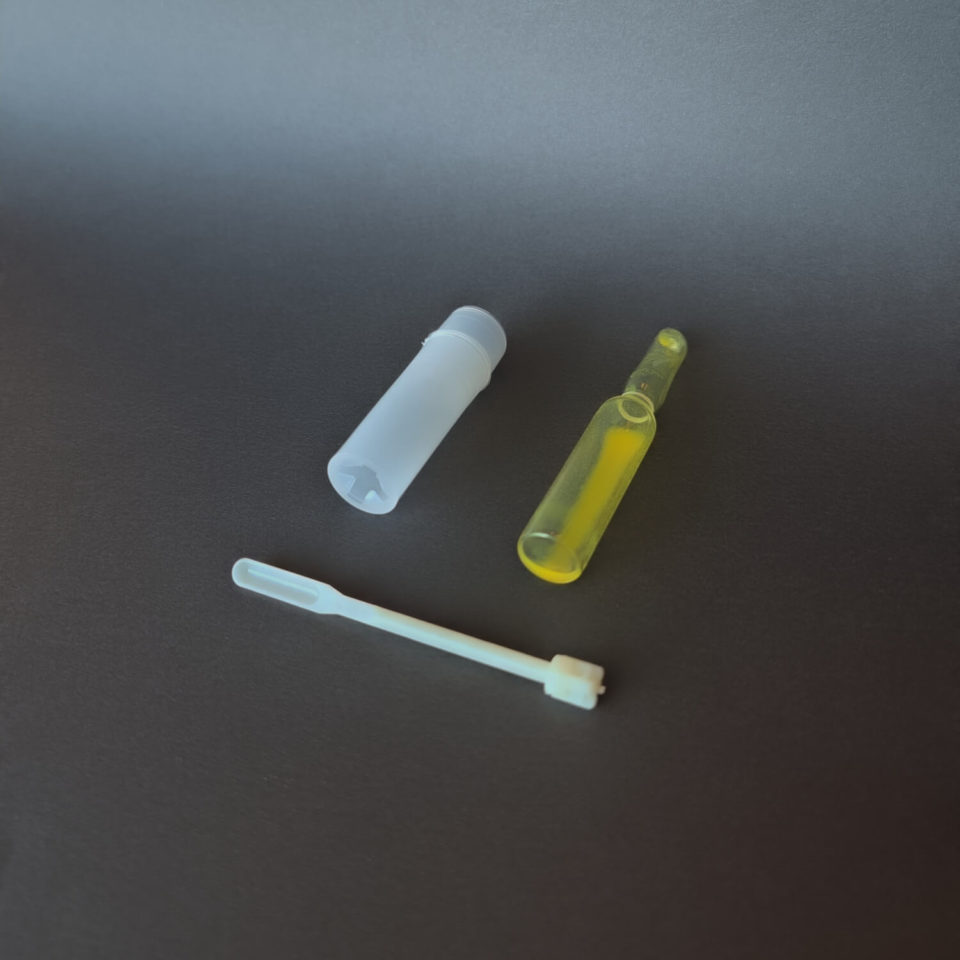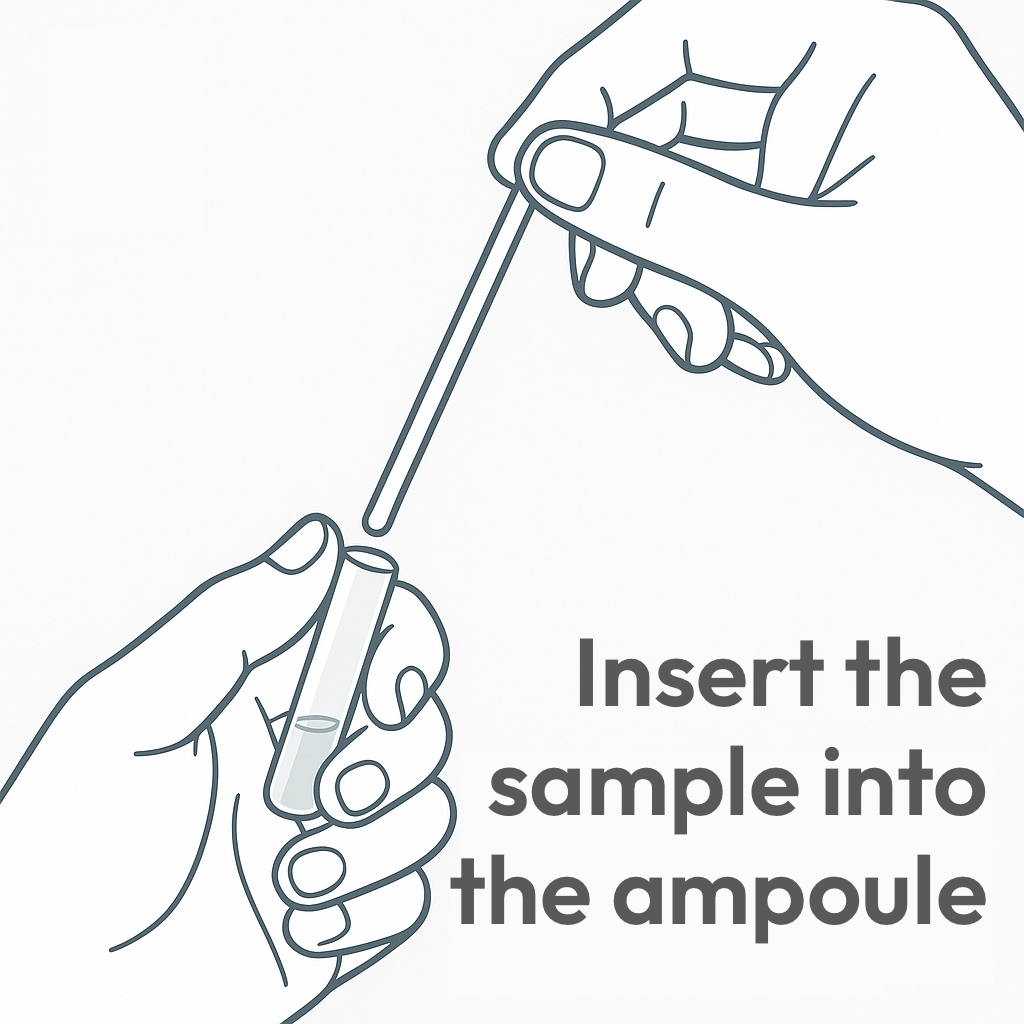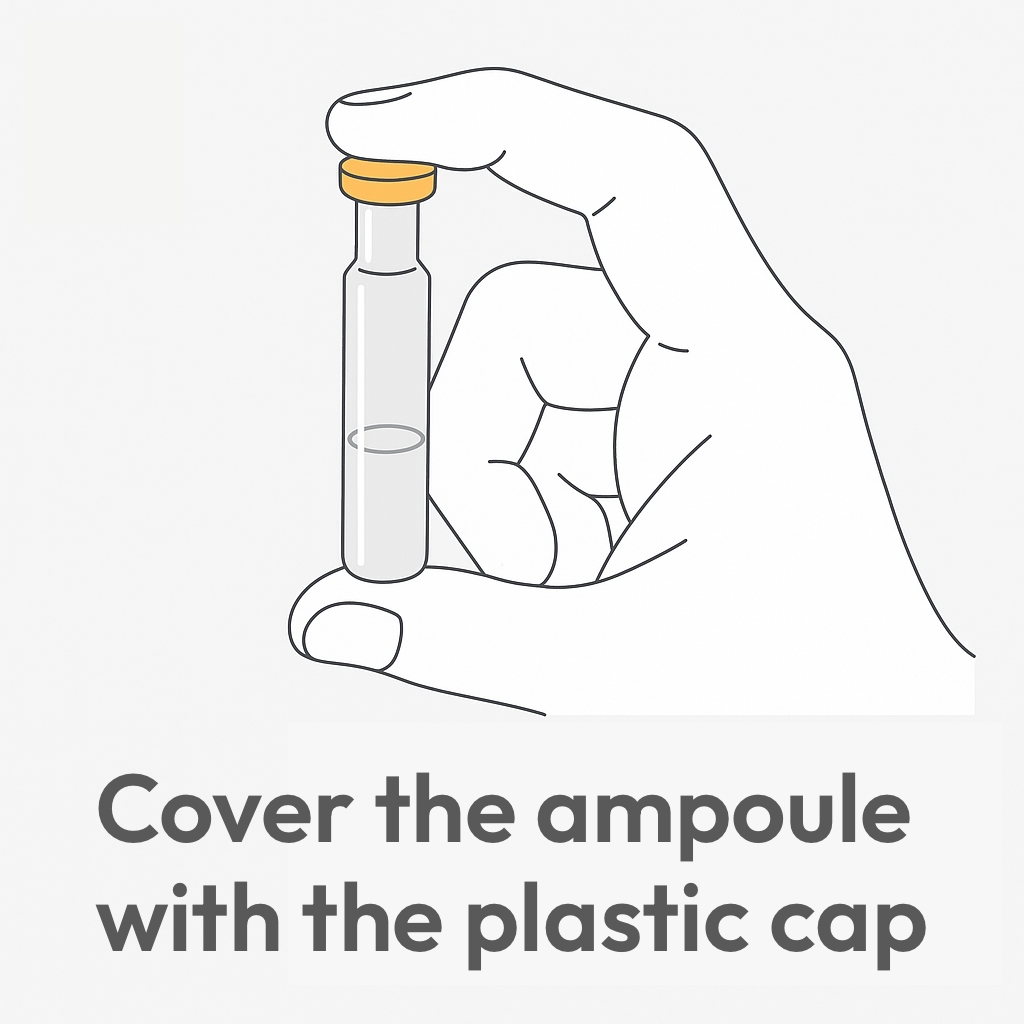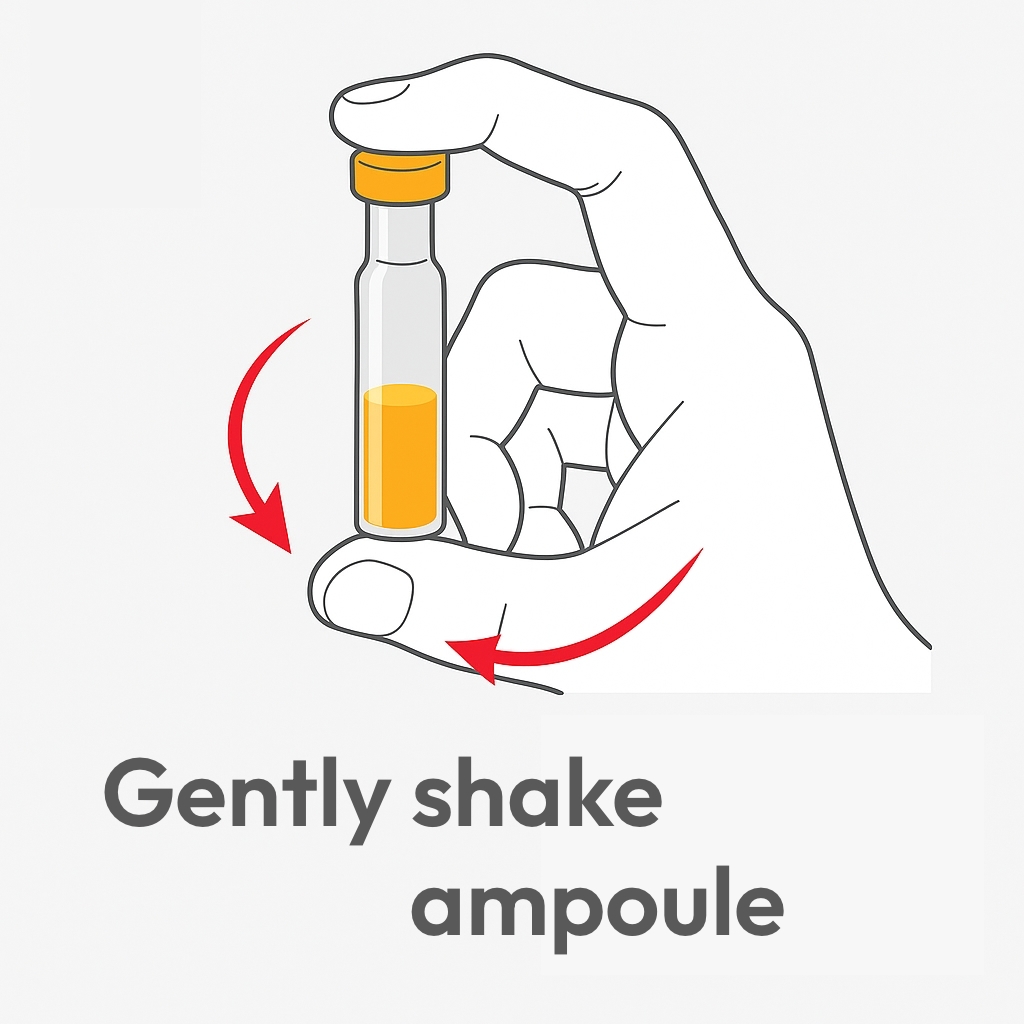Cocaine Test of Adulterants Instructions
Intended use
The test is a rapid qualitative test to help identify presumptive drugs or suspicious substances. It is intended to be used by laboratories, law enforcement agencies, associations working to reduce the risks associated with drug use, and anyone looking to identify a suspicious substance.
The substances used for cutting may be harmless (sugar, flour, etc.), but it can occur in some circumstances that potentially dangerous substances are added (levamisole, phenacetin, ephedrine, etc.).

指示
Follow instructions carefully to ensure accurate results and prevent common issues. Read all warnings and notices that are presented and exercise caution where necessary.
Step 1
Prepare 5mg (roughly the size of half a grain of rice) of the substance to identify. Break the powder into very compact pieces (as close to powder as possible and no clumps) with the small hammer located at the end of the spatula provided or any other clean/sterilized utility.
Step 2
Hold the clear glass ampoule (vial) in the upright position and snap off the top glass part while holding the plastic cover, using index finger and thumb. Keep it away from face so no residue splashes.
Step 3
The plastic cover has a built-in cap; twist and pull it apart to separate those two pieces. Discard the piece with the separated glass part and keep the small lid for use next.
Step 4
Keep the ampoule in the upright position (it will stand up by itself), and insert the sample collection using the spatula, into the ampoule.
Step 5
Carefully place the separated plastic cap (from step #3) on the opened ampoule.
BEWARE: make sure that the ampoule is well away from your face, because it can happen that the cap pops up under the pressure of the chemical reaction. For this reason, ALWAYS hold the cap on while mixing and waiting for the result with your finger and thumb (one on top of the plastic cap, and one on the bottom of the glass ampoule.Step 6
Gently shake and turn the ampoule to allow the sample and the reagent/granules to mix. Any colour change should be fully developed within 1 minute.
Step 7
Compare the colour change (if any) with the colours on the colour chart included in the leaflet in order to identify the main substance.
Step 8
You can then dispose of everything into a rubbish bin without any harm to the environment.
Results interpretation
If the ampoule changes colour:
- Either, the colour matches one of the colours referenced in the colourimetric legend. The test is then positive for the corresponding drug or substance.
- Or, the colour is uncertain or different from those referenced in the colourimetric legend. The test can then be simply negative for the substances researched or positive for a combination of several substances.
- Indeed, the positive reaction to one substance may be hidden or modified by the presence of another, which may produce unexpected colourations.
If the ampoule does not change colour:
- This means the tested sample does not contain any substances indicated on the colour chart.
Adulterants Results
Substance
Colour
Substance
Colour
Ibuprofen
Vitamin C
Levamisole
Lidocaine
Ephedrine
Benzocaine
Phenacetine, Aspirin, Aceteminophen
Procaine
Storage recommendations
- Store these tests in their original packaging, below 35°C (95°F) and protected from direct sun light.
- Keep out of reach of children.
- To avoid any risk of cutting, use the protective plastic tip to open the ampoule.
- Avoid eye, mouth, nose or skin contact with the reagents contained in the ampoule, which may cause irritation (first aid measure: rinse thoroughly with water). Use gloves.
- Do not ingest, inhale or smoke the reagents contained in the ampoule.
- Do not use after the expiration date.
Disclaimer
Regardless of the result obtained, extreme vigilance is required, as:
- The sample may contain harmful substances not identified or not referenced in the colourimetric legend.
- It is possible that a procedural or handling error, as well as the unexpected interference of certain substances, such as certain cutting products, may cause an erroneous result. The use of this test must be done with the full knowledge that no rapid test can be 100% reliable or conclusive.
- The results obtained by this test must be confirmed by a reference analytical method such as an official GC/MS and HPLC-MS/MS.
- This test can not give any indication on the quantity or proportion of the active ingredient in the sample analyzed, only the presence of it.
For these reasons, Happy Test cannot be held responsible for any damage or accident that may result from the use of this test.




